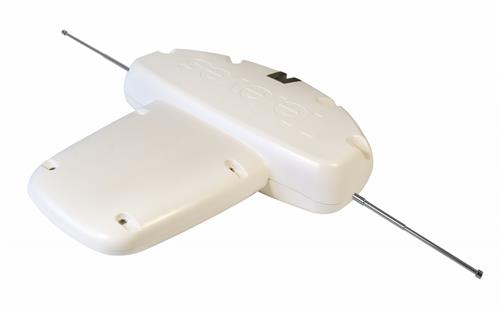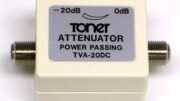Right up front, my friends, I have to tell you this is a very hard question to answer. It would be great if there were a single answer that would apply to every situation, but there isn’t. Instead, you have to try to understand the situation you’re in, and use the skills you have to try to get an answer that makes sense to you.
The thing you need to know about amplifiers
A lot of people think an antenna amplifier is going to be the answer to their problems. In general that isn’t true. Digital signals behave in very different ways than you may expect. With digital television signals, the actual signal level makes almost no difference. Because the TV’s tuner is only concerned with whether it reads a 1 or a 0, it doesn’t matter if that 1 is very strong or very weak. If the tuner can see that it’s a 1, that’s all that matters.
The purpose of an amplifier in a professional installation is to boost the signal enough to account for loss in long lines. As a signal travels through a cable, it becomes weaker. Eventually it becomes so weak that it can’t be distinguished from the noise that’s part of every system. Amplifying increases both the inherent signal and the noise that’s already there. That means that a more amplified signal is actually noisier, but again as long as the signal can be distinguished from that noise, it doesn’t matter.
What determines the limits of amplification
There are going to be two concerns when you start amplifying signals to go long distances. The first is noise figure. The noise figure is actually the result of some really stupefying math. To regular folks like you and me, it’s roughly defined as the amount of extra noise added to a line when you amplify. Every device you use adds noise, and so does every cable. As you use more and more, you are “raising the noise floor,” in other words increasing the basic amount of noise. As long as you’re increasing the signal high enough so it’s “above the noise floor” you’re going to be ok. As the noise floor rises, though, eventually you’ll get to the point where the signal just fades into the noise and there’s nothing more you can do.
The other concern is overmodulation. Overmodulation happens when a signal is so strong that it overwhelms the circuitry of a tuner. You can imagine overmodulation as similar to your speaking too close or too loudly into a microphone. Sometimes you get noisy feedback. Sometimes your voice just sounds fuzzy. No matter what, if the signal is greater than the system can handle, you’ll get something that was worse than when you started.
The cables themselves can handle a lot of signal. It’s quite possible for a cable to carry a signal that’s 10,000,000 times stronger than a typical antenna signal. The real problem comes when that signal hits a tuner. If it’s too strong, you’ll have overmodulation.
Then there’s the problem of measuring.
Most people don’t have access to the kind of measuring equipment that they need to really know what’s going on with their signals. I recommend any serious antenna enthusiast get something like our Signal Scout meter which is reasonably priced and will give them real measurements in dBm. It’s not super important what a dBm is right now. What you need to know is that it’s a negative number generally between -30 and -70. If it’s lower than -70 you probably don’t have enough signal. If it’s higher than -30 you have too much. Anywhere else in that range, it doesn’t matter how much signal you have.
Some TVs are equipped with some sort of signal meter, but it’s usually a bar that moves left to right and doesn’t tell you what it’s even measuring. That’s not going to help at all.
Bottom line here
As I said, the goal is to get the signal at the television to be between -30 and -70 dBm. You should be able to amplify all you want in order to get there. Solid Signal has amplifiers that deliver up to 60dB amplification and that’s fine as long as you need it. As a general rule you’ll lose 6dB for every 100 feet of cable, plus 3dB for every 2-way splitter. If you’re running the signal 400 feet through 4 splitters, that’s 36dB loss. If you’re starting with very weak signals, you may need to amplify that much. Most people don’t, though.
Need to know more?
If you have other questions about antennas or amplifiers, call the experts at Solid Signal! We’re here for you during East Coast business hours at 888-233-7563. If it’s after hours, fill out the form below. We’ll get back to you quickly!





